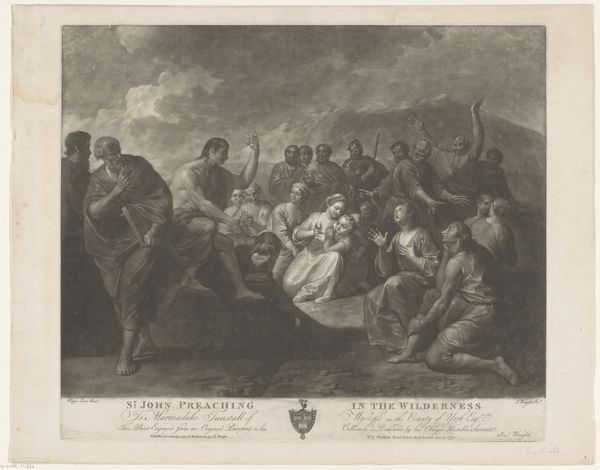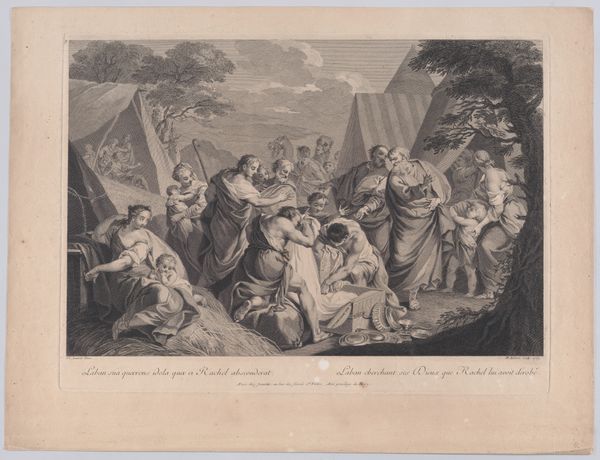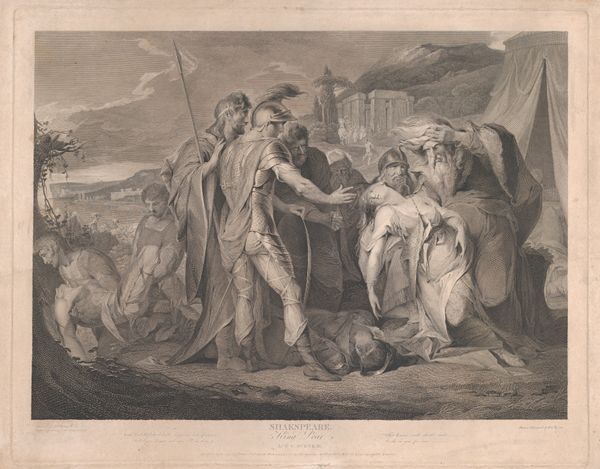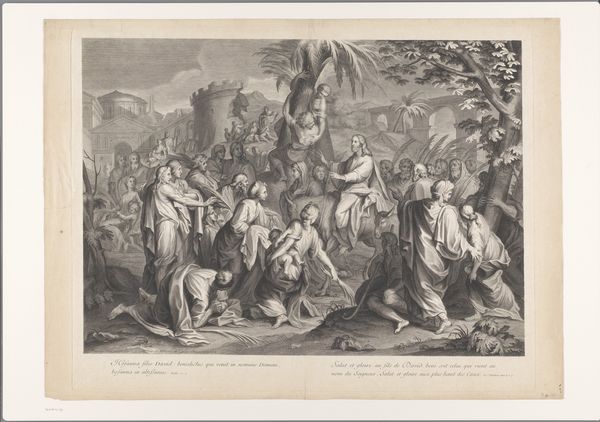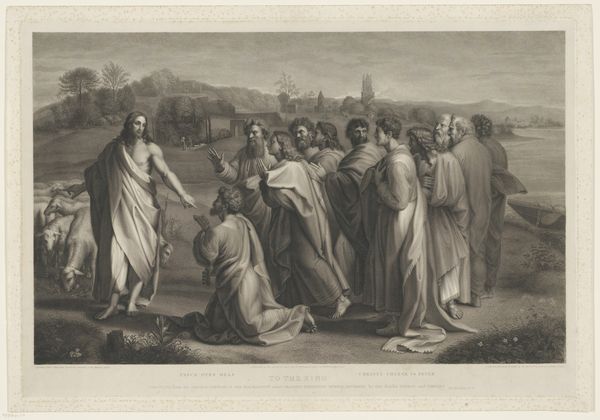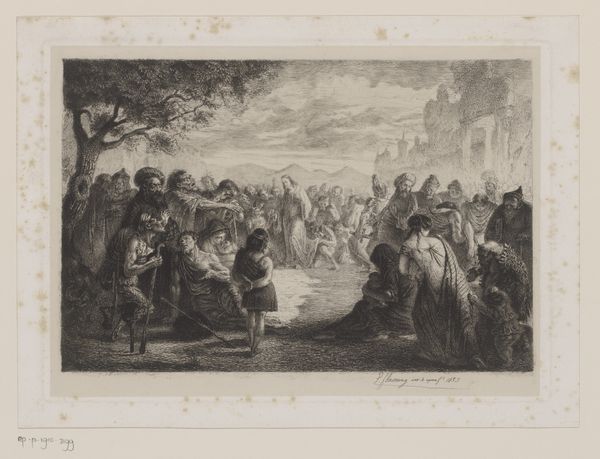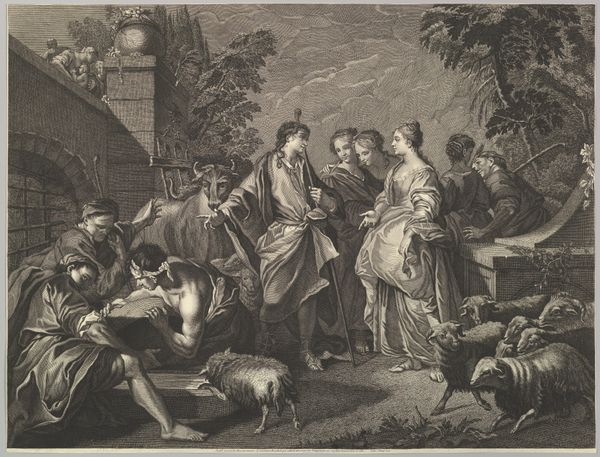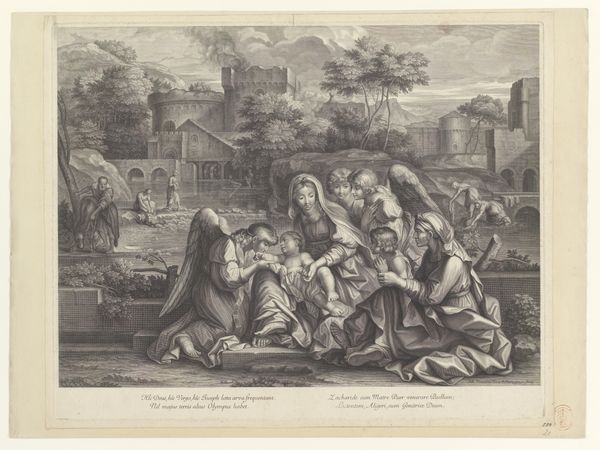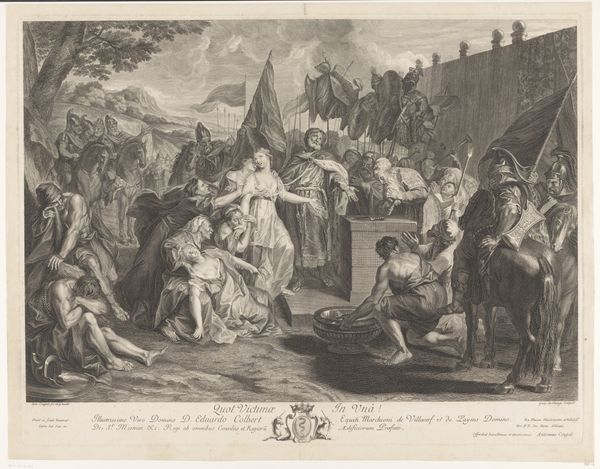
Karel II van Engeland arriveert op het strand bij Dover, 25 mei 1660 1789
0:00
0:00
williamwoollett
Rijksmuseum
print, graphite, engraving
#
narrative-art
# print
#
landscape
#
charcoal drawing
#
figuration
#
pencil drawing
#
romanticism
#
graphite
#
history-painting
#
academic-art
#
graphite
#
engraving
Dimensions: height 486 mm, width 617 mm
Copyright: Rijks Museum: Open Domain
Curator: Before us is an engraving titled "Karel II van Engeland arriveert op het strand bij Dover, 25 mei 1660" by William Woollett, dating back to 1789. It's quite a scene! Editor: Indeed! My immediate impression is one of calculated theatricality. The figures are arranged almost like a stage tableau, everything meticulously composed for maximum impact. There's an almost oppressive feeling of order here. Curator: Absolutely. The engraving reproduces Benjamin West’s painting depicting Charles II's arrival in Dover marking the restoration of the monarchy. Considering that prints like this were widely disseminated, it's interesting to examine them not just as art, but as cultural products shaping popular perceptions of power and historical events. The materiality of the print itself speaks to its function in distributing royalist ideology. Editor: Precisely! Look at how Woollett, the engraver, uses light and shadow to create depth and drama. Notice the textures rendered with such precision, the fabrics, the faces... and consider how each line serves the whole to create a certain air of grandeur. Even the very choice of gray, rather than sharp contrasting blacks, is very thoughtful, it provides for harmony in the depiction. Curator: I am very interested in how engravings democratized access to history painting. Suddenly, these grand narratives were available to a much wider audience. But the image also invites consideration about labour, for instance, and it shows the work behind reproducing art for mass consumption. How was the division of labor organized, who profited most, and what kind of artisanal traditions were at play here? Editor: Interesting. I keep coming back to that central group—Charles and the kneeling figure. The gesture, the clothing, and even the implied narrative is building an archetypal hero. The formal construction encourages the viewer to find the composition almost perfectly framed with the high tower overseeing a calmful composition. Curator: Examining this print helps us remember art’s relationship to politics, production and distribution. I am pleased by seeing it through this materialist lens that uncovers more about the circumstances in which visual narratives take on their meaning. Editor: And I found value analyzing its structure and form to comprehend its timeless pursuit of grandeur and meaning through meticulous compositions, a potent way to get closer to historical artistic strategies.
Comments
No comments
Be the first to comment and join the conversation on the ultimate creative platform.
